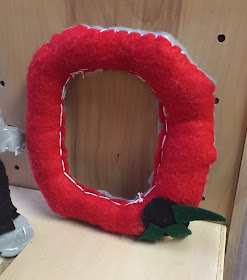This is the second year I've done this lesson with my 2nd graders and I decided it was going to be one of our art show projects this year. The whole project is inspired by a French artist by the name of Auguste Herbin. I know a lot of artists, but he was not one of them when I came across Hope's post. I immediately knew the project would be a winner, though. Essentially, Herbin created his own "secret code" alphabet called Alphabet Plastique.
I have my students each come up with a title consisting of one or two words. They devise a simple geometric code for each letter in their title. The codes will eventually be made out of construction paper, so they can't be too crazy complex.
When my students did this last year, I tried to have them plan out the final version of their work in a way that didn't leave any blank space. It got a little too intense. This year, I simply gave students various rectangles of card stock and let them figure out how to best fill their paper. If there was negative space left, it wasn't a big deal. I wound up with better results and fewer headaches. Most kids filled up their page anyway.
I'm blown away by the work my students create. I have to stop and remind myself that they were made by kids who are only 7 or 8.
I usually post my lesson plans, but I'm not going to post here because the lesson really isn't mine to post. You can see more details over at Mrs. Knight's blog.
 |
| Seriously. The complexity of shape and the overall design are stunning. |




















